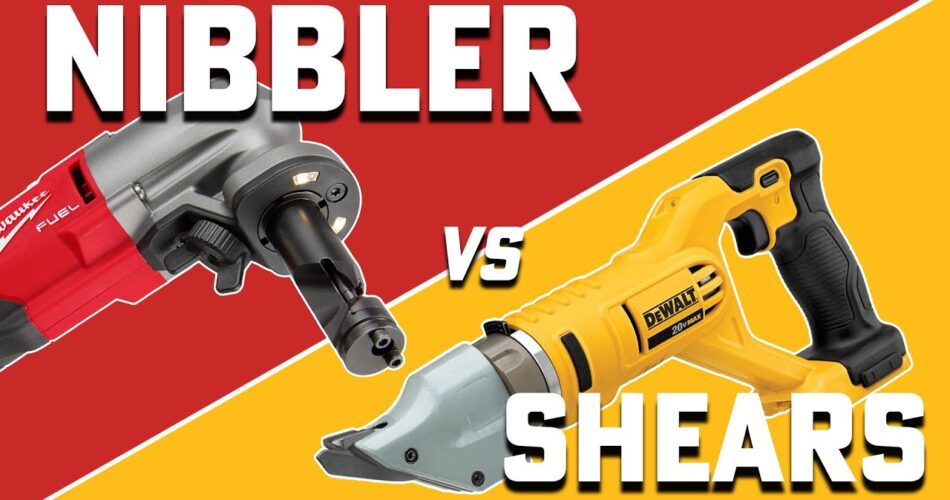Metal workers and metalworking artists can both agree that choosing the right tool for your application is one of the most crucial parts of working with metal; choose the wrong one and your piece will become warped, distorted, and unusable. But sometimes it’s the choosing of the tool itself that is found to be the most difficult aspect, and as with any industry (Xbox versus PlayStation, Android versus Apple, hardcover versus paperback), the great debate of shears versus nibblers is ever present in the background of these choices. Is there a right choice, or a wrong one? Well that, dear reader, will likely depend on the application you’re using it for.
Let’s get into nibblers for a bit. These tools, true to their name and for lack of a better term, tend to chew or nibble through metal, much like a small rodent would. This method tends to expel a lot of small metal chips, which will be quite sharp; cleaning up after using a nibbler is absolutely paramount for use. Not only can the chips cause injury should some unlucky soul happen to be struck with them, but they can also cause damage to flooring and even equipment, should they find their way into the nooks and crannies. Keeping a magnet or some sort of magnetic roller on hand to sweep around the work area upon completion of your day may be a good investment for nibbler operators.
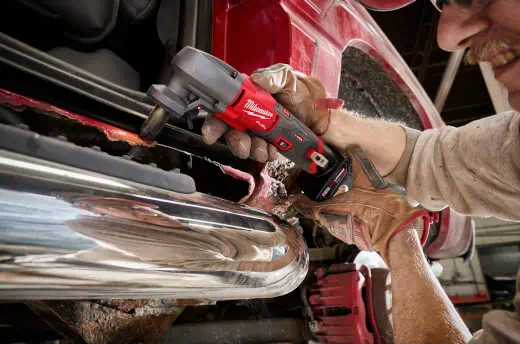
Nibblers like the Milwaukee 2476-20 take advantage of punch and die assemblies to make their cuts, which will need to be replaced occasionally with regular use. You won’t want to be using nibblers with your smaller pieces or for creating fine lines, as nibblers tend to destroy material in the process of cutting through. The metal around your cut will remain undisturbed, so you won’t face any distortion or warping in the metal, but the cut itself won’t be as fine as some may like. Nibblers shine at creating cutouts or small channels in metal, especially in corrugated sheet metal; the punch and die assembly in many nibblers are capable of rotating, so you won’t have to worry about the ridges in corrugated metal. You can also begin cutting in the center of your metal with a nibbler, provided you drill a hole to begin the cut first. Metalworking artists, you may find yourselves working with nibblers quite a bit; they’re quick at taking curves in metal, and an artist would be able to get some amazing work done with a nibbler.
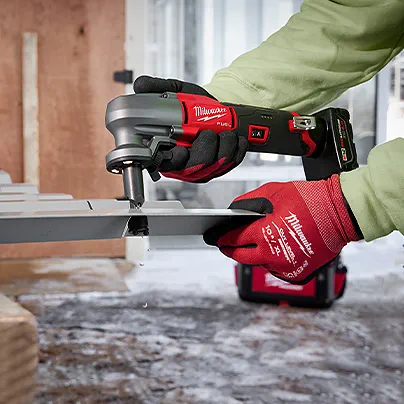
Shears, on the other hand, come in two different types; single-cut and double-cut. Single-cut shears, say the Milwaukee 2637-20 for example, can be thought of as essentially a big, powerful pair of scissors; one blade moves to cut through the metal and against a stationary anvil blade, leading to absolutely no waste material being created. Single-cut shears are capable of doing the heaviest lifting of all the cutters this writer is talking about today, your coppers, leads, brass, aluminiums, and are also capable of taking curves in metal, though they require a wider arc to curve around than nibblers would. Due to the sheer power of the shears, metal will typically get warped or distorted along your cut lines, and single-cut shears are capable of leaving distorted or jagged edges along the cut if pushed too hard. Patience is the name of the game with single-cut shears; don’t try rushing them, and you should get through just fine.
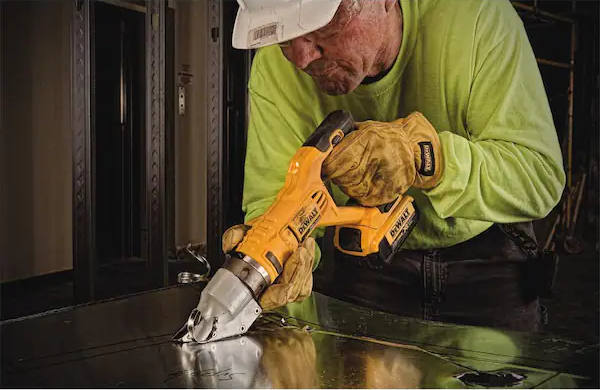
Double-cut shears like DeWalt‘s DCS494B, on the other hand, act almost like two separate cutters through the metal, removing strips of metal rather than the chips seen with nibblers. Waste, obviously, is created with double-cut shears, but nowhere near as much as with nibblers, and what is created is significantly easier to spot and clean at the end of the day. You won’t be able to get through as much heavy-duty work with double-cut shears as you would with single-cut shears, nor will you be able to take curves nearly as well as single-cuts, let alone nibblers, but you’ll also be getting minimal distortion in the metal along your cut as long as the tool is held straight on. If you’re working with light gauge sheet metal, get yourself a pair of double-cut shears and see what they can really do.
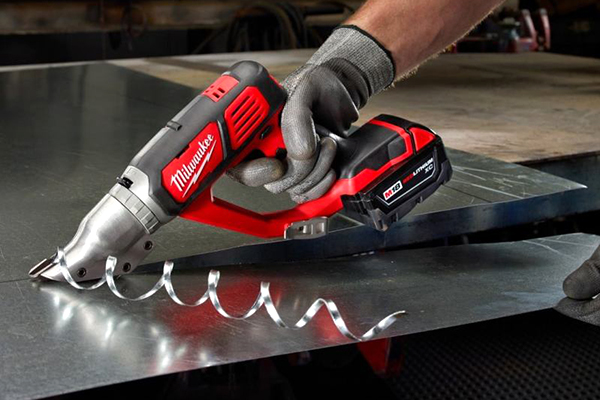
Metal cutting is an extremely delicate and involved process, and picking the right tool for the job is absolutely crucial. Some applications may even be completed with a simple pair of handheld snips, bypassing the need for powered tools at all; if you’re in the industry, however, it’s always a good idea to have at least a pair of shears or a nibbler on hand just in case. Feel free to pick up your own pair of shears or a nibbler right here at Ohio Power Tool, and as always, feel free to reach out to us at 614-481-2111 or sales@ohiopowertool.com with any questions, and be sure to follow us wherever you consume social media to stay up to date on the latest deals, news, and more!


